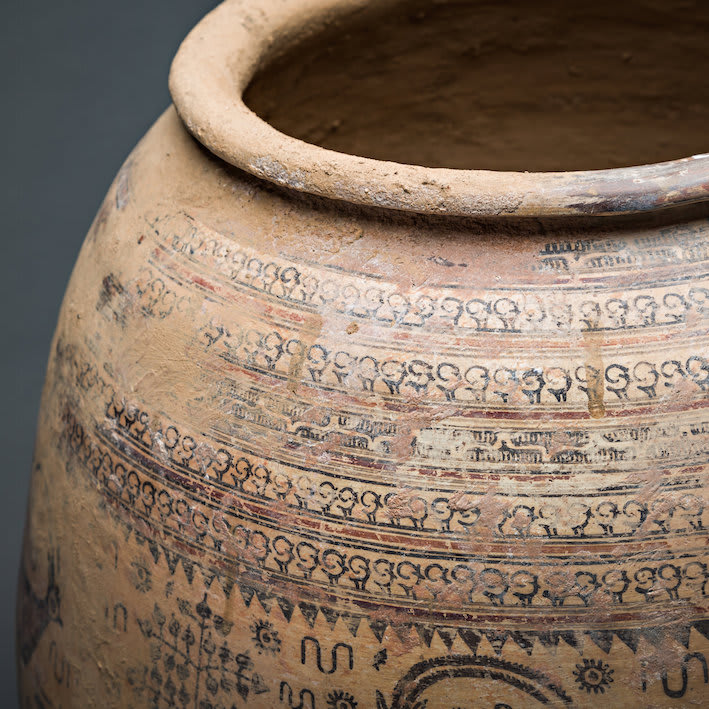Large Indus Valley Pot, 2500 BCE - 2000 BCE
Terracotta
height 54.6 cm
height 21 1/2 in
height 21 1/2 in
AM.0138
Further images
The Indus Valley Civilization was an ancient civilization that flourished in the Indus River Valleys primarily in the Sindh and Punjab provinces of Pakistan, extending westward into the Baluchistan province,...
The Indus Valley Civilization was an ancient civilization that flourished in the Indus River Valleys primarily in the Sindh and Punjab provinces of Pakistan, extending westward into the Baluchistan province, and into north western and western India.
The Indus Valley Civilization was one of the world’s first great urban civilizations. It developed out of earlier farming and pastoral communities that inhabited the plains and western mountainous regions of Baluchistan and Afghanistan. These communities were referred to as pre- or Early Indus cultures as each had its own distinctive style. These regional styles are most clearly observed in various painted designs, especially on pottery. Gradual dispersal of specific types of ornaments indicates that there was a gradual integration of these communities through marriage alliances, ritual interaction and eventually political treaties.
This Indus Valley painted pottery storage jar is important due to its unusually large size, and quality of decoration. It consists of linear and figural designs with brown and black pigments. Jars of this kind were believed to have been used for storing cereal. Most of them were found in large stone building used as warehouses.
Five scrolls of miniature depictions of an ibex or gazelle run at the top of the vessel giving the object an animated feeling. It is in excellent condition.
This style of decoration proved to be popular in Baluchistan.
The gazelle or goat motifs and trees are interesting representations of local fauna, as well as remarkable examples of brush painting used by potters during this period.
This jar is a magnificent example of objects produced in the Indus Valley at the time.
The Indus Valley Civilization was one of the world’s first great urban civilizations. It developed out of earlier farming and pastoral communities that inhabited the plains and western mountainous regions of Baluchistan and Afghanistan. These communities were referred to as pre- or Early Indus cultures as each had its own distinctive style. These regional styles are most clearly observed in various painted designs, especially on pottery. Gradual dispersal of specific types of ornaments indicates that there was a gradual integration of these communities through marriage alliances, ritual interaction and eventually political treaties.
This Indus Valley painted pottery storage jar is important due to its unusually large size, and quality of decoration. It consists of linear and figural designs with brown and black pigments. Jars of this kind were believed to have been used for storing cereal. Most of them were found in large stone building used as warehouses.
Five scrolls of miniature depictions of an ibex or gazelle run at the top of the vessel giving the object an animated feeling. It is in excellent condition.
This style of decoration proved to be popular in Baluchistan.
The gazelle or goat motifs and trees are interesting representations of local fauna, as well as remarkable examples of brush painting used by potters during this period.
This jar is a magnificent example of objects produced in the Indus Valley at the time.







